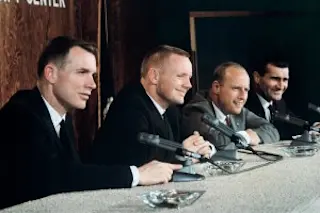I managed to get to a preview screening of First Man this week! And as someone who has been steeped in Apollo and space history for the better part of her life (I learned about the Moon landing when I was seven and have been obsessed ever since) I have some thoughts about it… Heads up: there are spoilers.
I wanted to love this movie.
The best thing about this movie is it’s gorgeous. Without question, my favourite part was the attention to detail on the hardware. The control panels, the wear on dials, the texture on the insides of plains and spacecraft were all so beautifully done there were some shots that looked almost like the old pictures I’ve seen hundreds of times. Even the colour palette is so perfectly mid-century there are moments you feel like you’re in old NASA b-roll. I won’t totally spoil it, but the ...














